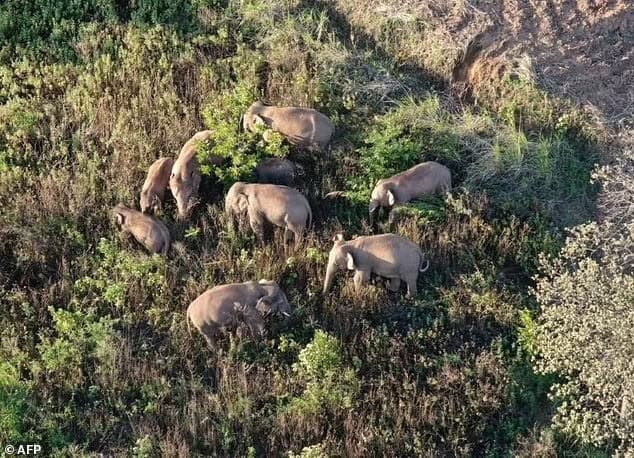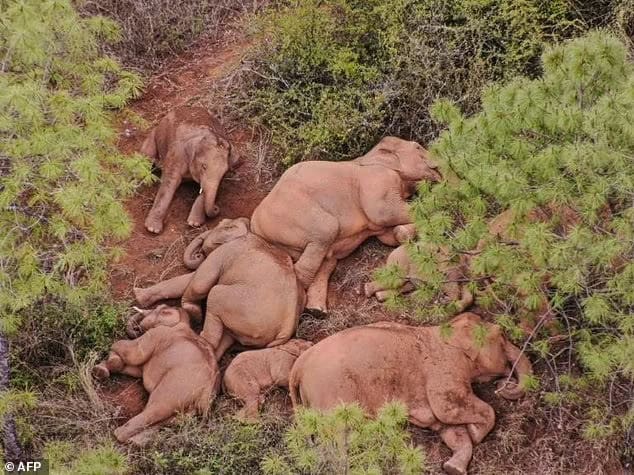A herd of elephants in southern China has captured global attention with their unexpected 500-kilometer (310-mile) journey, spotlighting habitat loss’s impact and conservation efforts’ challenges.

Since setting out in the spring of last year, the elephants have caused over $1 million in damage by raiding shops and trampling crops, forcing the evacuation of thousands of residents along their path.
According to Ahimsa Campos-Arceiz, an elephant specialist at the Xishuangbanna Tropical Botanical Garden, the elephants appear to have left their traditional range because it was no longer suitable. However, they have no specific destination in mind. “They are just moving around trying to find a place that will work for them,” Campos-Arceiz explained to AFP.

Authorities have been monitoring the herd around the clock using drones, and they are concerned that stress could lead the animals to become aggressive.
Elephants typically communicate using infrasonic sounds and the vibrations of their feet, but these signals can be disrupted by city noise, which is confusing.
Despite roaming in densely populated areas, the elephants appear in good health and often engage in playful behavior, suggesting they are coping well.

Habitat Destruction and Fragmentation
The elephants’ original habitat in Yunnan province has been increasingly encroached upon by rubber and tea plantations, leaving herds confined to fragmented and disconnected reserves.
Despite being one of the few countries where the endangered Asian elephant population is on the rise—thanks to anti-poaching laws and conservation measures—China’s elephant habitats have shrunk by nearly two-thirds over the past 30 years.
According to Zhang Li, an ecology professor at Beijing Normal University, the country’s wild elephant population has doubled to over 300 during the same period.
However, habitat fragmentation caused by highways, hydropower plants, and other infrastructure obstructs migration routes, complicating mating and social behaviors. Efforts to protect villagers, such as electric fences, also pose risks to wandering elephants.
The destruction of forests has led to increased human-elephant conflicts, with more than 70 fatalities and numerous injuries reported in Yunnan between 2013 and 2019.
Conservation Concerns
While the reasons behind the herd’s migration remain unclear, the elephants’ journey has gained a significant following online, with videos of their playful moments and rescues drawing international media attention.
Chinese state television has even launched a 24/7 live stream to track the herd’s movements, including footage of the two calves born during the trek.
However, conservation experts caution that attempts to guide the elephants back to a safe habitat could be dangerous.
Measures like baiting them with truckloads of pineapples and sugarcane might alter their natural behaviors and dietary habits. Wang Hongxin of Beijing Normal University warns that offering such foods is akin to “getting a child used to eating sugar.”
Changes in diet have been linked to health issues among elephants, and previous attempts to keep them away from farmland by planting corn, bamboo, and wild bananas have inadvertently increased their disease susceptibility.
The herd’s ongoing journey underscores the broader threats facing Asian elephants, with the potential for rising conflicts if their habitats continue to diminish.
Experts emphasize the need for humans to make room for wildlife, advocating for the restoration of natural landscapes to ensure the survival of these majestic animals.
Read more Elephant News.
Comments
Post a Comment